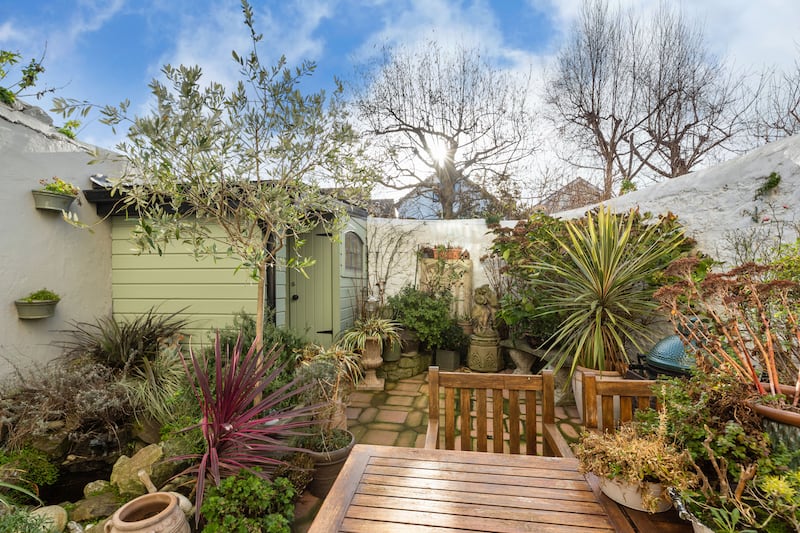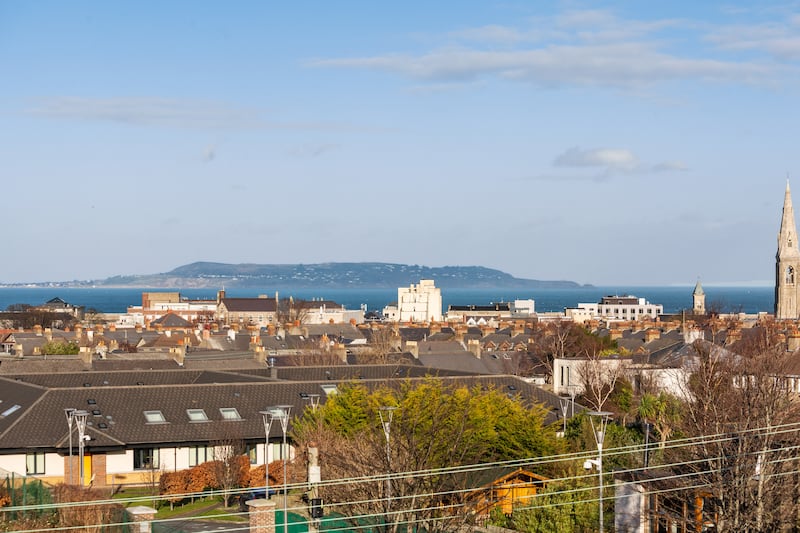A mews house on a terrace in Dún Laoghaire is striking in many ways: once the stable of a large Victorian on Tivoli Terrace South, it was a two-storey house when its current owners bought it in 2013 for €468,500, according to the Property Price Register. Now, after a major rebuild that began in 2017, it is a three-storey, two-bedroom home with many standout design features, such as the circular lift from the ground to the top floor, front windows with “integral Venetian blinds” (encapsulated between two panes of glass), a kitchen that opens directly into the livingroom/diningroom through a wide hatch and a smart Italian bathroom on the first floor. And although modern, with a B3 Ber, it has period style, with sash windows, centre roses and cornicing created – like all the joinery – by local artisans, says Ann, one of the vendors.
It’s clear that little expense was spared on Tivoli Mews, a second home for Ann, a professional pianist, and her husband Jim, a management consultant; the English couple is moving back to live full-time in the UK because of changed personal circumstances. The rebuild was designed by Glasthule architect Andrew Lohan (whose restoration of a west of Ireland church was featured on Channel 4′s Grand Designs) but the couple handled the high-spec interior design themselves. Now Tivoli Mews, the 143.5sq m (1,545sq ft) two-bed is for sale through Sherry FitzGerald, seeking €1.25 million. Meticulously maintained, it’s in walk-in condition.
Tivoli Mews is not what most of us think of as a mews house, typically a house at the back of a much larger house. It’s more like a semidetached house, built adjacent to number 7 Tivoli Terrace South. The attention to detail is clear from the moment you walk into the front porch, which has a glazed roof and on the right, a leaded stained glass window designed by the couple and made by Dublin stained glass artist Alan Tomlin. The porch opens into the ground floor, effectively a nearly completely open-plan kitchen/living/diningroom, painted, like most of the house, in neutral colours. The circular glass two-person wheelchair-accessible lift beside the stairs is completely visible, a surprisingly attractive as well as a practical feature in a house with about 39 steps to the top floor, says Ann. They installed it to future-proof their home.
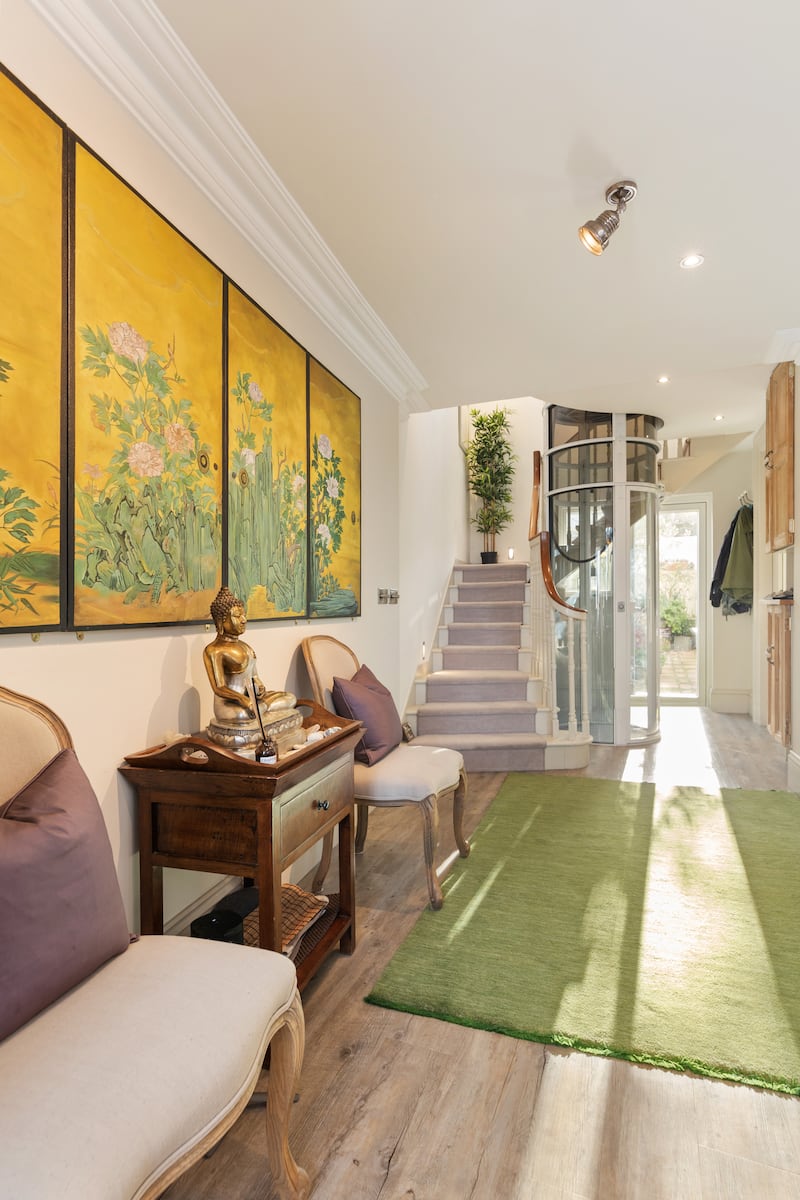
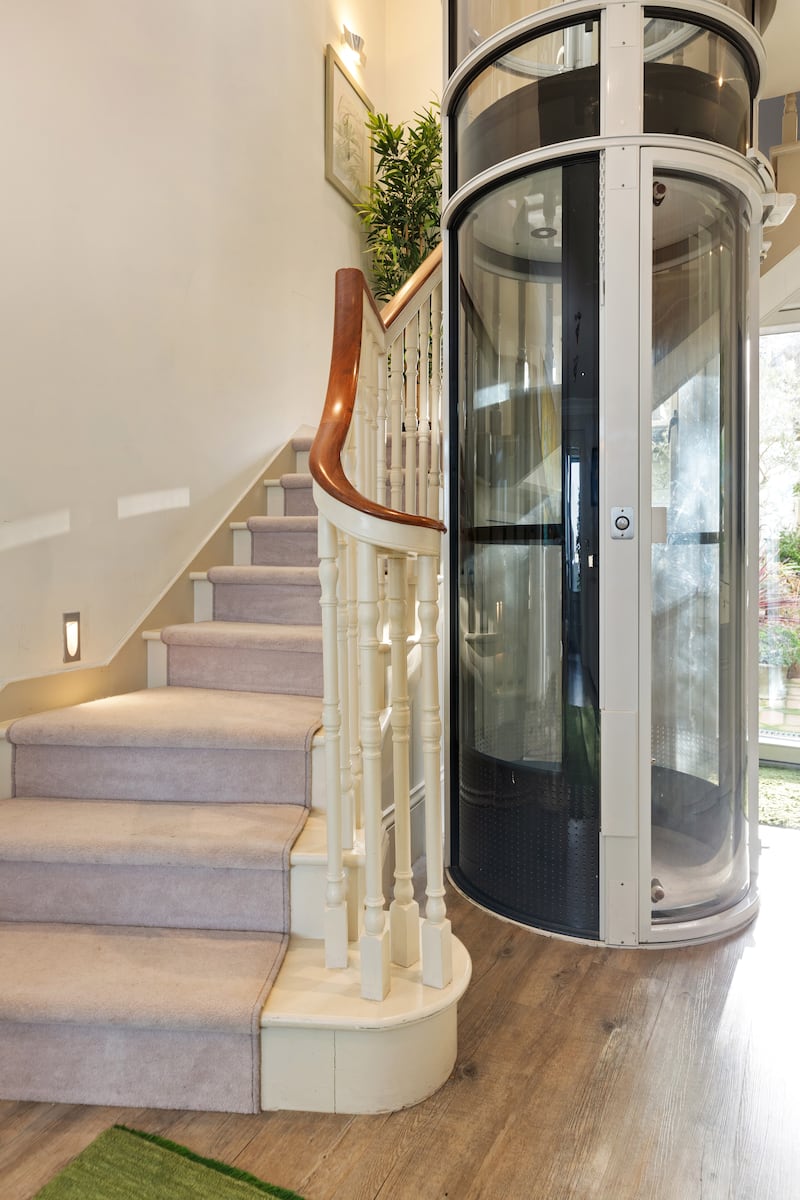
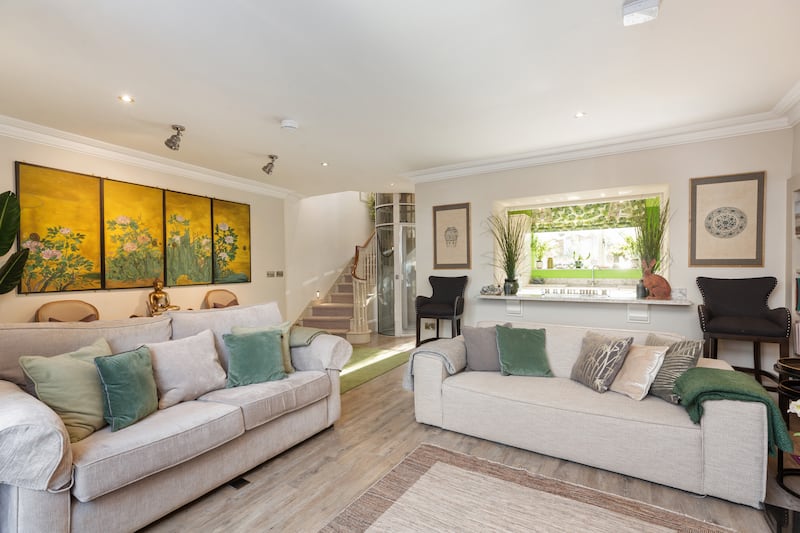
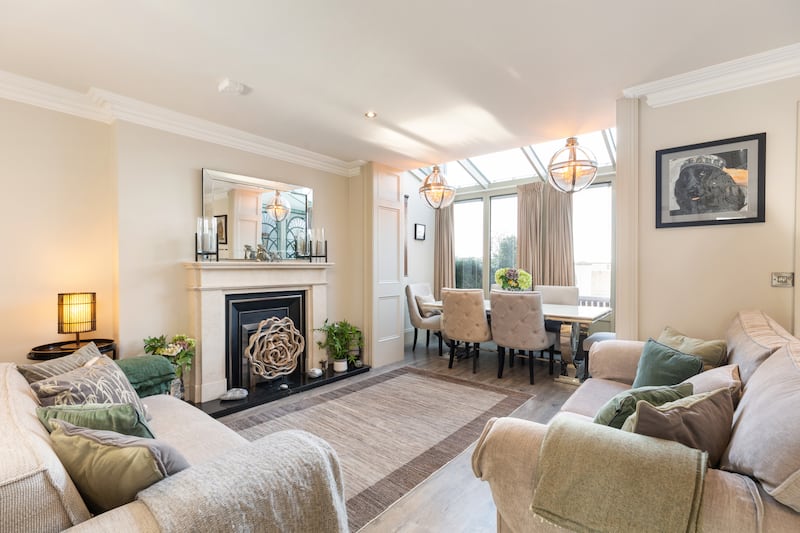

The livingroom has a marble fireplace with a log-effect gas fireplace, vibrant yellow panels on one wall and a dining area in what the agent calls “an orangery-style” space. It has a glazed roof and nearly floor-to-ceiling windows – with those integral blinds – overlooking the front. The space is floored throughout with a pale hardwood called panga. Details such as several chrome-covered electric sockets in the livingroom floor show how much thought went into the design.
10 of the best new shows to watch in April: including Netflix medical drama and two AppleTV+ releases
MobLand review: Pierce Brosnan’s Irish accent is a horror for the ages. Forget licence to kill, this is more Darby O’Gill
Steve Wall: ‘When Bono was offered the medal, I tweeted: Surely he won’t accept that. I didn’t know he already had’
‘It is so expensive in Dublin we decided to rent’: Swedish embassy returns to capital
There’s a marble breakfast bar/kitchen counter in a wide arch towards the back of the room, looking into the kitchen. (A fireproof shutter over the counter/breakfast bar complies with building regulations). Double doors opposite the lift open into the galley-style kitchen which has a Belfast sink and white units with chrome handles, like all the doors in the house. Windows looking into the back garden are framed by a wall painted green and a smart green-patterned blind. A door at the back of the ground floor opens into the garden.
Circular stairs lead to the first floor, where the smart Italian bathroom has walls painted aubergine, a black-tiled floor, centre rose, wall of mirrors, slipper bath and a wash-hand basin on a black pedestal.
The drawingroom on this floor is the width of the house, with two sash windows looking over the field across the road and Dún Laoghaire’s rooftops to Dublin Bay and Howth. It looks like a genuine period room, with coving, cornicing and a centre rose. A marble mantelpiece surrounds a log-effect gas fire; at the other side of the room is Ann’s Steinway grand piano – she calls it her music room. New owners could possibly turn this into a third bedroom.
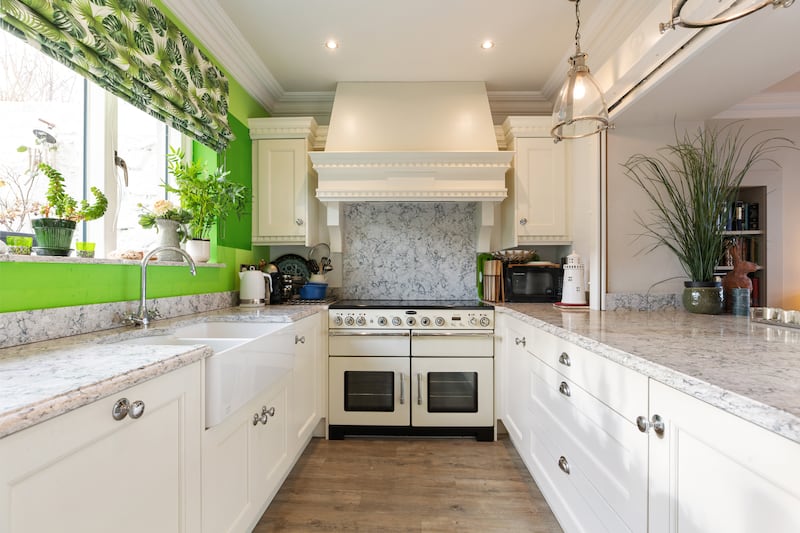
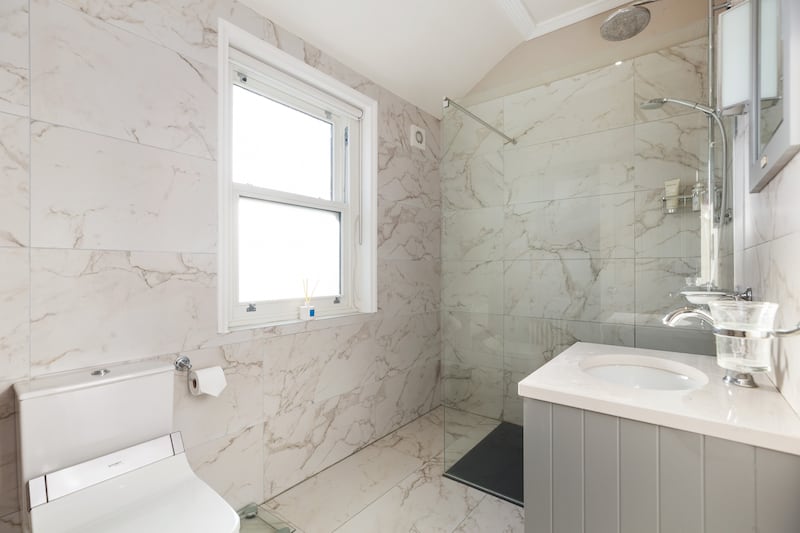
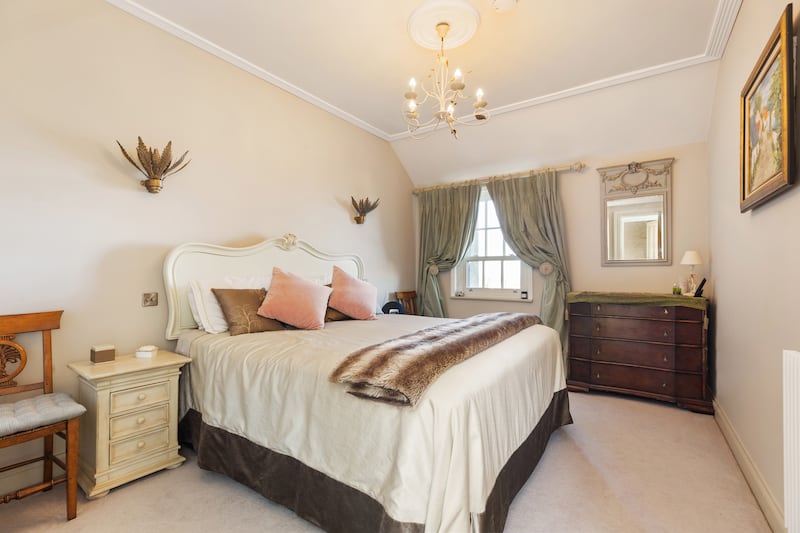
Twenty-one steps lead to the top floor where there are two double bedrooms at the front of the house: there’s a decent-sized walk-in dressingroom off the main bedroom, and on the landing looking over the back garden, a smart fully-tiled shower room. Up a couple of steps to the very top is a small space fitted out as a study nook.
The patio-style enclosed back garden is filled with plants and there’s a rockery water feature. A patio table has a space heater over it. A garden shed opens to reveal a toilet-cum-utility room with tiled floors and walls. A storage space beside it has a stained-glass window.
There is room to park a car at the front of the house, which has a shared entrance with number 7 next door.
There’s a large playing field across the road, next to the Tivoli Training Centre. It’s not known what the plans are for the site, sold to a developer in recent years, but it is zoned F, for recreational use, in Dún Laoghaire’s Draft County Development Plan 2022-2028. Tivoli Terrace South is a short walk to the centre of Dún Laoghaire.
